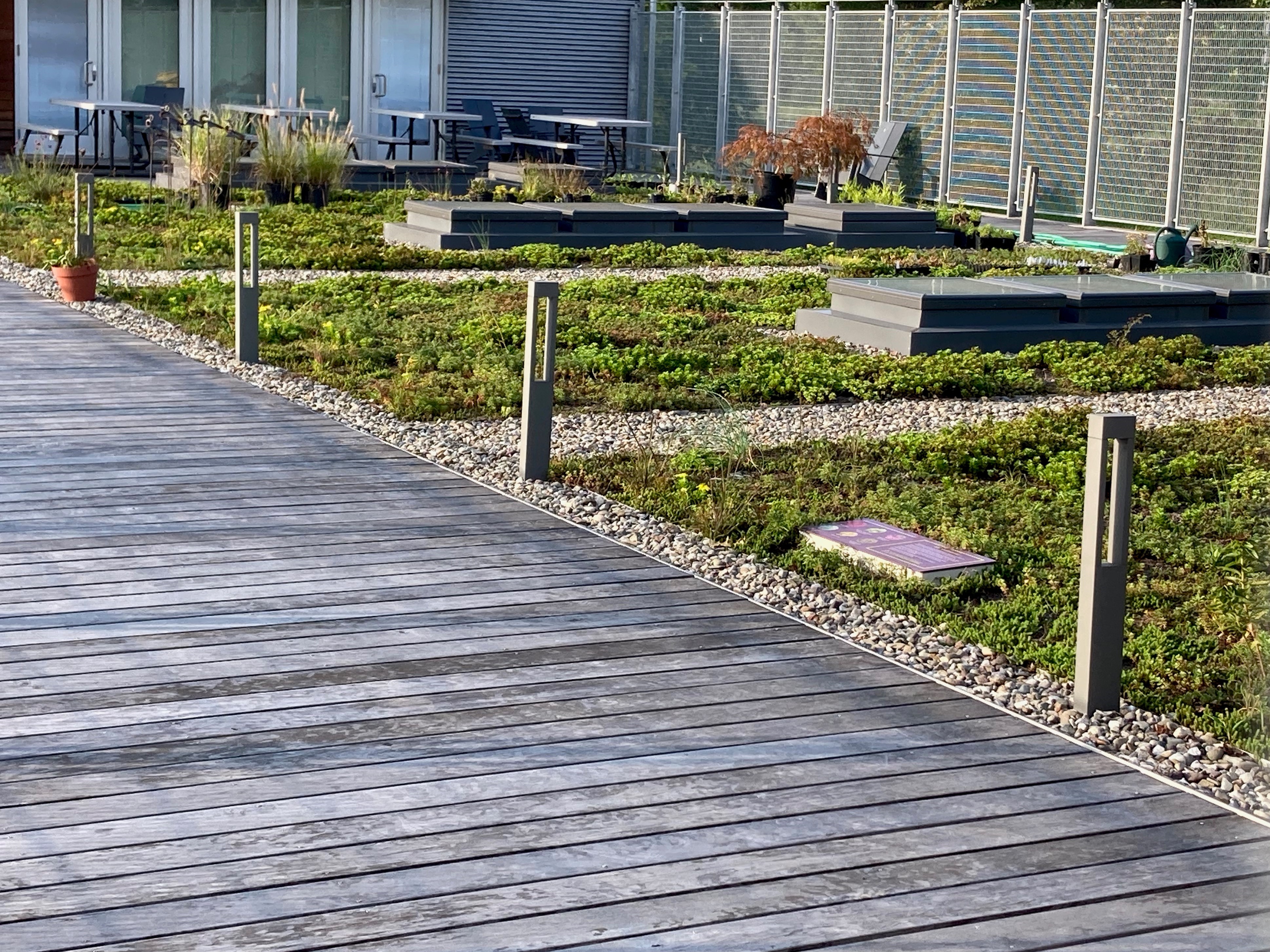
Green Roofs
Asset Type : Engineered
Water Classification:
Stormwater
Stormwater
Construction Rank :
3
O&M Rank :
2
How it Works : “Green” roofs are covered with vegetation to enable rainfall infiltration and evapotranspiration of stored water. Green roofs are grouped into two categories: extensive and intensive. Extensive roofs are lightweight systems of manufactured root medium which typically have low plant diversity; they are more easily incorporated into conventional building construction and require little maintenance. Intensive roofs typically use a deep rooting medium such as topsoil and can incorporate a wide variety of plants but require special considerations due to higher roof loading and greater maintenance.
O&M Required : Fertilize (at beginning); Weeding; Plant maintenance, pruning; Keep drains cleared; Compost annually; Water only if absolutely needed; Watch for pests or disease
Design Considerations : The load-bearing capacity of the underlying roof structure is critical in the design of a vegetated rooftop. Generally, green roofs weighing more than 17 pounds per square foot saturated require consultation with a structural engineer. Flat roofs are easiest to design and install. The maximum slope for a green roof is about 25 percent. Follow federal and state standards for wind resistance. Since uplift pressures tend to be higher at roof corners, these areas may be considered for vegetation-free zones. Monolithic membrane, applied as a hot liquid, provides superior waterproofing. Protective layers are placed on top of waterproofing, including root barriers to prevent roots from damaging the waterproof layers. A drainage system needs to be designed that will retain water for plant uptake, and retain excess water for storage. Soil for green roofs are lighter than typical soil mixtures, generally with about 75 percent mineral matter, and 25 percent organic matter. A range of plants are suitable for green roofs. Native plants offer a variety of opportunities to create effective vegetative schemes. For extensive roofs (shallow soil systems), shallowr-ooted plants that can withstand heat and drought are best. It is essential to mark the position of roof drain outlets and irrigation pipe inlets before installing protective layers so they can be easily located.
Costs : High (initial capital costs). Costs will vary depending on roof size and materials used. Low (life cycle replacement and resurfacing costs), additional cost savings through reduced summer cooling costs.
Benefits : Extensive : Can reduce summer cooling costs. Low maintenance. Placement on up to 25-30°roof pitch. Lightweight. Suitable for retrofit. Easier to install. Slow stormwater runoff. Aesthetically pleasing. Provides insulation for roof. Extends life of roof. Reduction in impervious area for the property. Intensive: Greater plant diversity, better aesthetics. Good insulation properties. Potential access for recreation. Slower stormwater runoff, larger detention capacity. More amenable to wildlife. Reduction in impervious area for the property
References: